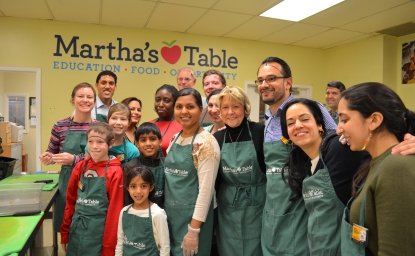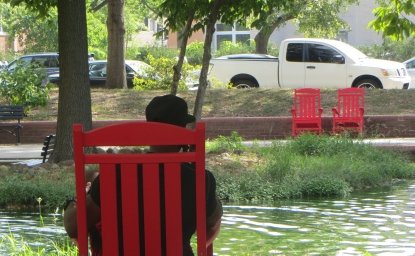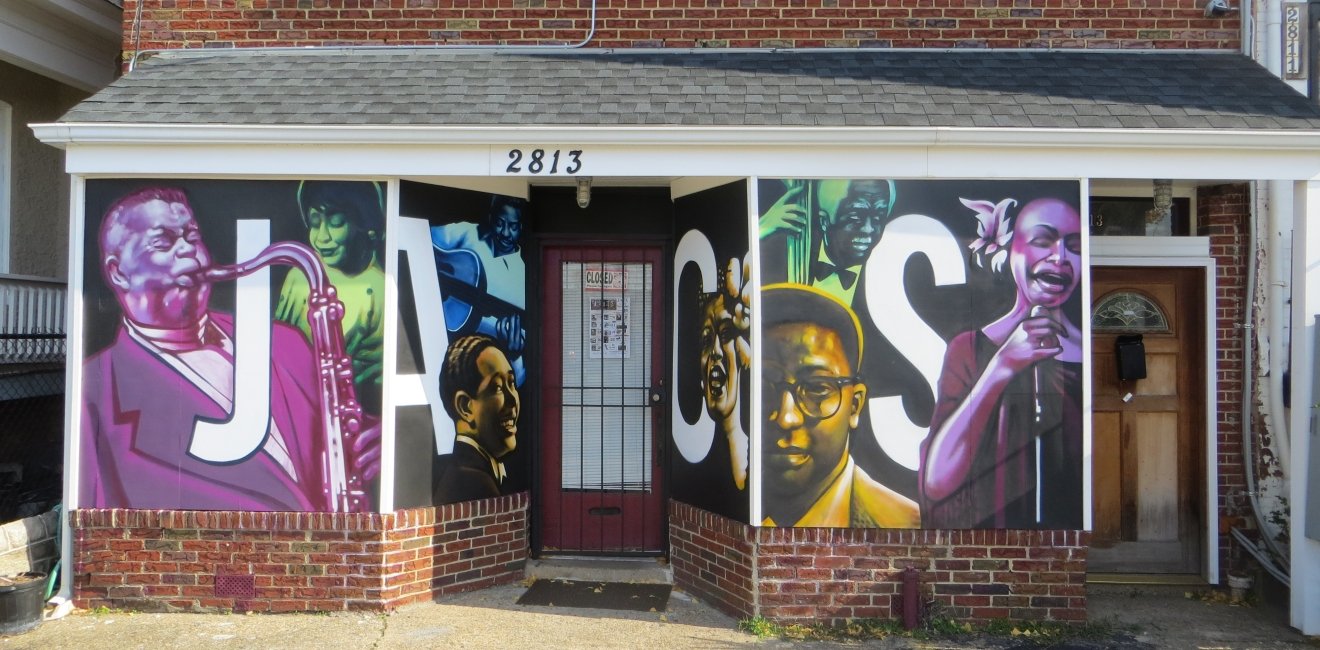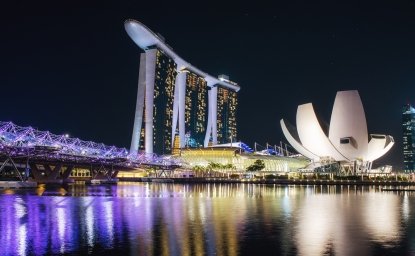In his memoir Music Is My Mistress, Duke Ellington fondly recalled whiling away the days of his youth at Holliday’s poolroom in Washington, DC. Holliday’s, Ellington wrote, “was not a normal, neighborhood-type poolroom. It was the high spot of billiard parlors…Guys from all walks of life seemed to converge there: school kids over and under sixteen; college students and graduates, some starting out in law and medicine and science; and lots of Pullman porters and dining-car waiters.” But for Ellington, far more important was the fact that the best piano players in town hung out at Holliday’s as well.
There was a time when D.C. was full of such places where folks from all walks of life came together with the city’s best musicians effortlessly and unceremoniously. Often times, the musicians were not “local” in that they played around the world. For every Duke Ellington, Marvin Gaye, and Roberta Flack who left town to make it, there was a Shirley Horn, Buck Hill, Bo Diddley, Keter Betts, Chuck Brown, and Charlie Byrd who remained in D.C. even as they toured the planet. Hometown D.C. has long been – and continues to be – a music city.
Like the Neapolitan “music machine” of the eighteenth century, Washington’s musical environment has formed around large institutions – schools, churches, colleges and universities, the Smithsonian, the Kennedy Center, and the U.S. military – rather than around a star system. For musicians, institutions provide steady incomes and medical insurance. Large – and, at times, overly bureaucratic -- institutions rarely provide opportunity for celebrity.
As a result, Washington’s music community gets overlooked even as dozens of Washington-reared jazz lions make their mark in New York, Washington-based musicians such as Afro-Bop Alliance and Shirley Horn win Grammy awards, and Washington bands such as the legendary Fugazi define entire musical genres. On any given evening of the year, Washington musicians are performing on a half-dozen continents.
Music abounds. The Washington area’s more than 2,000 professional musicians, their non-professional colleagues, students, friends, families, and audiences sustain important Blues, Gospel, Jazz, R&B, Go Go, Bluegrass, Gallic, and Classical music communities overflowing with talented masters. Many local performers move among several of these genres freely.
Public institutions – unlike the recording and film industries or the musical theatre – rarely have separate stage entrances for performers. Musicians and audiences arrive through the same door and share the same space so that distance and boundaries shrink. Jazz Diva Sharón Clark may be a superstar when she performs in Russia’s St. Petersburg Philharmonic Hall; in Washington, she is just a neighbor when she holds forth at Alexandria’s La Porta’s Restaurant.
For the past two decades, Washington has been filling up with newcomers competing for space and driving up rents. The sorts of micro-environments which nurtured a young Ellington, sustained a successful Shirley Horn, and trained current jazz newcomers Kush Abadey and Ben Williams are disappearing. Or so it only appears. Reality is more complex.
Just this year, an important new venue has opened which brings together musicians and the community just as Holliday’s Pool Hall did back in Ellington’s day. Founded by Dr. Alice Jamison and DeAndrey Howard, a venerable trumpet player and beloved figure, the D.C. Jazz and Cultural Society (JACS) prides itself on creating a community-oriented space for players and listeners.
Located in a storefront hidden away in an obscure corner of the Brookland neighborhood, JACS is just the sort of place Ellington found so important: an informal and comfortable venue featuring top-flight talent that is always open to all. Performances run from six until nine every Wednesday and Sunday evening (times when musicians usually do not have gigs lined up). Entry is five dollars, and food is available at cost. The room includes a stage large enough to hold a piano, an organ, and perhaps a half-dozen players. On a good night, others join in from the floor.
Jamison and Howard have found the right spot for their venture. Located near the intersection of Franklin and 12th Streets NE, JACS is just far enough away from any metro station to have avoided quickly rising rents. Yet, one of the metropolitan area’s best Neapolitan pizza places – Menomale – is no more than a football field away.
Gentrification is taking place here as everywhere in D.C. with a luxury apartment building rising across the street. Covered by colorfully painted street murals honoring jazz greats, JACS helps insure that the area will long look and feel like Hometown D.C.
In her classic works on Washington history, Pulitzer Prize winning author Constance McLaughlin Green described African American D.C. as a “secret city,” known to itself but hidden from others. This dichotomy between hometown and official, secret and known, runs through the city’s history, politics, and identity. Washington is one of America’s compelling music cities. Like Green’s “secret city,” D.C. remains absent from far too many narratives about American music.
Hardly hidden from those who want to know, gems that enrich the lives of music lovers thrive in the city’s various nooks and crannies from a concert hall in the National Academy of Sciences along the National Mall, to a parlor of an old Victorian mansion on O Street NW, from a church in Southwest D.C. and a former Naval Hospital in Southeast, to the corner of Franklin and 11th Streets in Northeast. Thanks to Washingtonians such as Jamison and Howard, the city’s music makers – playing as diverse genres as Blues and Bluegrass, Jazz and Go Go -- insure that D.C. retains a community heart.
Author

Former Wilson Center Vice President for Programs (2014-2017); Director of the Comparative Urban Studies Program/Urban Sustainability Laboratory (1992-2017); Director of the Kennan Institute for Advanced Russian Studies (1989-2012) and Director of the Program on Global Sustainability and Resilience (2012-2014)

Urban Sustainability Laboratory
Since 1991, the Urban Sustainability Laboratory has advanced solutions to urban challenges—such as poverty, exclusion, insecurity, and environmental degradation—by promoting evidence-based research to support sustainable, equitable and peaceful cities. Read more

Explore More in Building Inclusive and Livable Cities
Browse Building Inclusive and Livable Cities
Bringing New York to the Broadway Stage

10 Steps to a More Genuine DC Experience



